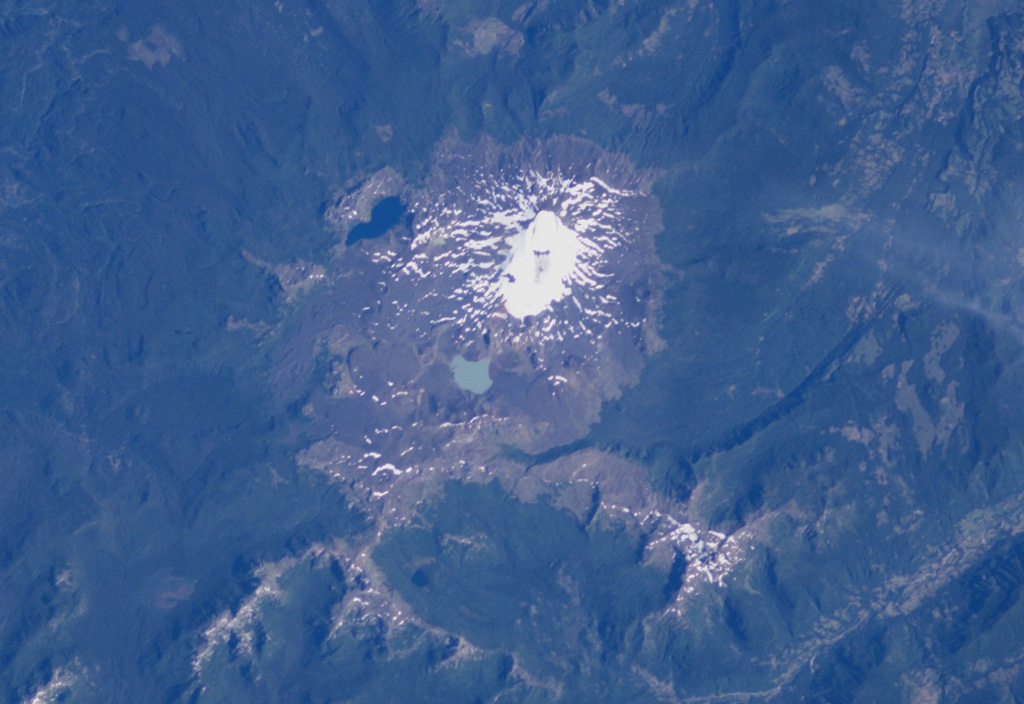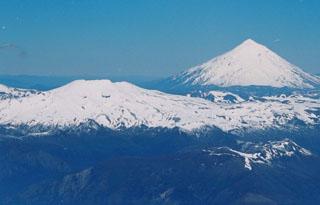Image GVP-11057

Quetrupillan stratovolcano is seen in this NASA International Space Station image with north to the upper right. The volcano was constructed within a large 7 x 10 km wide caldera. The 2360-m-high Quetrupillan volcano has produced more silicic lavas than its more prominent neighbors Villarrica and Lanín. Clusters of monogenetic vents, including lava domes and pyroclastic cones, are found on the southern side of the volcano.
NASA International Space Station image ISS006-E-40424, 2003 (http://eol.jsc.nasa.gov/).
![]() This image is made available as a Public Domain Work, but proper attribution is appreciated.
This image is made available as a Public Domain Work, but proper attribution is appreciated.

Quetrupillán
